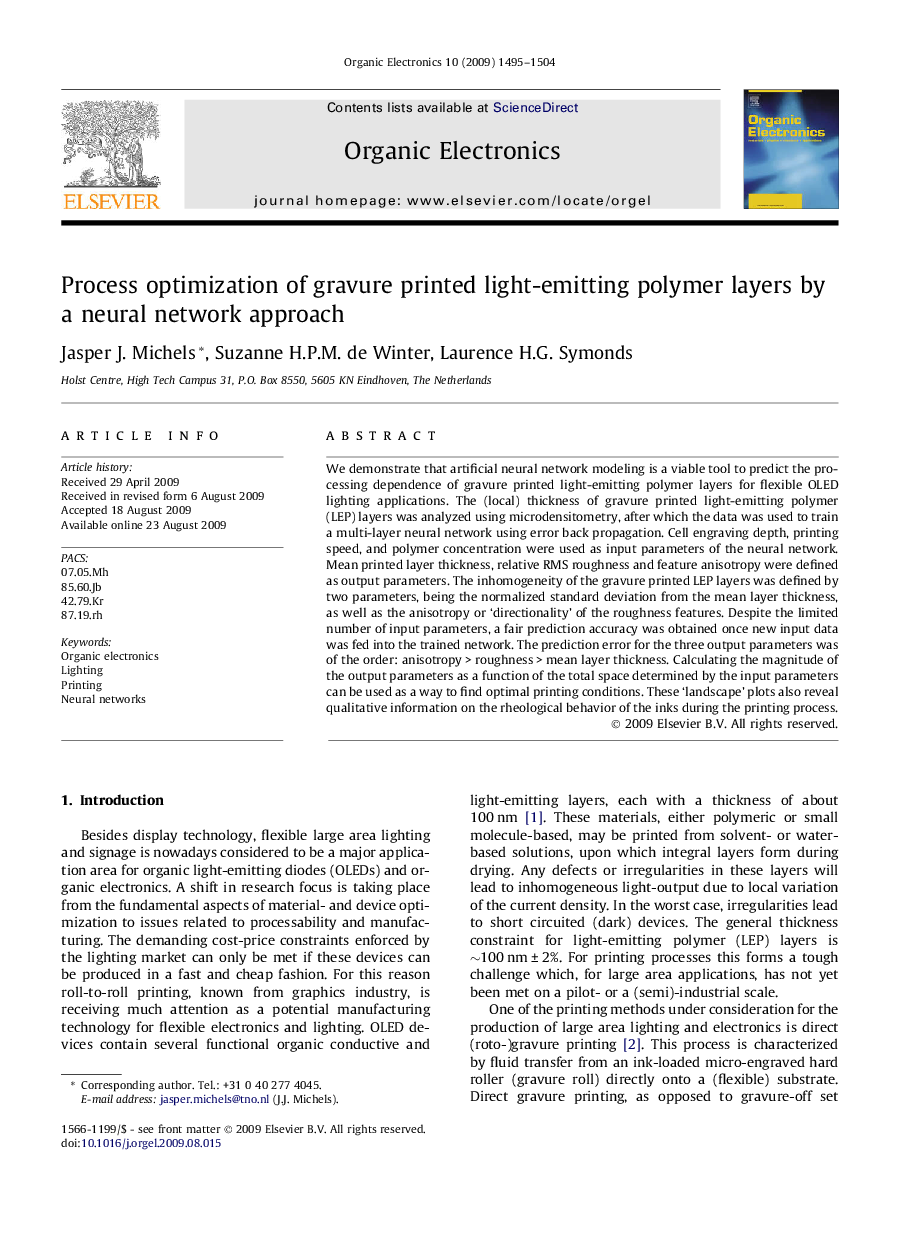| کد مقاله | کد نشریه | سال انتشار | مقاله انگلیسی | نسخه تمام متن |
|---|---|---|---|---|
| 1268053 | 1496842 | 2009 | 10 صفحه PDF | دانلود رایگان |

We demonstrate that artificial neural network modeling is a viable tool to predict the processing dependence of gravure printed light-emitting polymer layers for flexible OLED lighting applications. The (local) thickness of gravure printed light-emitting polymer (LEP) layers was analyzed using microdensitometry, after which the data was used to train a multi-layer neural network using error back propagation. Cell engraving depth, printing speed, and polymer concentration were used as input parameters of the neural network. Mean printed layer thickness, relative RMS roughness and feature anisotropy were defined as output parameters. The inhomogeneity of the gravure printed LEP layers was defined by two parameters, being the normalized standard deviation from the mean layer thickness, as well as the anisotropy or ‘directionality’ of the roughness features. Despite the limited number of input parameters, a fair prediction accuracy was obtained once new input data was fed into the trained network. The prediction error for the three output parameters was of the order: anisotropy > roughness > mean layer thickness. Calculating the magnitude of the output parameters as a function of the total space determined by the input parameters can be used as a way to find optimal printing conditions. These ‘landscape’ plots also reveal qualitative information on the rheological behavior of the inks during the printing process.
Journal: Organic Electronics - Volume 10, Issue 8, December 2009, Pages 1495–1504